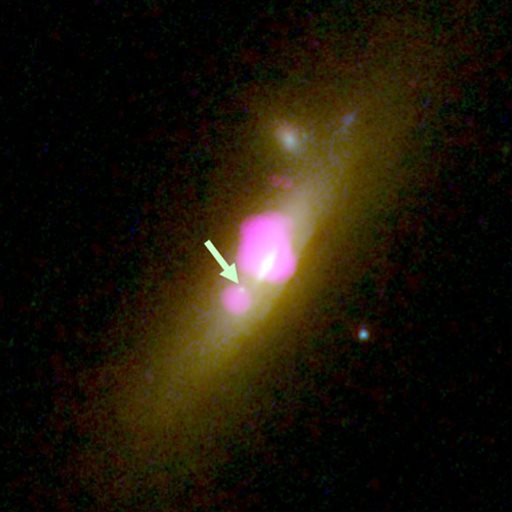Uncommon Galaxy Housing Two Black Holes, One Deprived of Stars
At the annual meeting of the American Astronomical Society in Kissimmee, Florida, Julie Comerford from the University of Colorado at Boulder presented her recent discovery, which is even more uncommon than a galaxy with two black holes: a slender black hole. Out of the known galaxies, only 12 have been identified to possess two black holes, as Comerford explained. Typically, galaxies contain a single supermassive black hole at their core, which is equivalent to the mass of 1 million to 1 billion suns.

However, in this newly detected galaxy located approximately 1 billion light-years away, one of the black holes is considerably smaller than the other and appears to be starved of stars. Unlike most black holes, which are surrounded by stars, this one seems to be “naked.” Comerford suggests that the slim black hole may have lost mass during the collision of two merging galaxies, akin to a crash diet. Alternatively, it could be an extraordinary instance of an intermediate-sized black hole that will likely transform into a supermassive behemoth over time. The existence of intermediate-sized black holes has yet to be confirmed by astronomers, making Comerford’s focused investigation all the more intriguing. These intermediate black holes have a mass ranging from 100 to 1 million times that of our sun. Comerford utilized the Hubble Space Telescope and NASA’s Chandra X-ray Observatory in her research, leading to the discovery of this fourth two-black hole galaxy last year. The presence of a potential intermediate-sized black hole within it was an unexpected bonus, according to Comerford.
The first double-black hole galaxy was discovered by chance in 2003, and Comerford is now actively working to systematically uncover more of them. These findings are expected to provide valuable insights into the development of black holes.
This article is republished from PhysORG under a Creative Commons license. Read the original article.
Do not forget to share your opinion with us to provide you with the best posts !



0 Comments